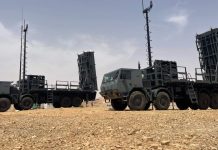By Catherine Nambi
The introduction of safe school zones has sparked a transformative wave in road safety, significantly reducing road crashes and ensuring the safety of school-going children and pedestrians.
This proactive initiative has addressed the pressing road safety issue and set a precedent for sustainable urban planning and community engagement.
In the bustling streets of Kampala, where road safety has been a longstanding concern, a glimmer of hope shines through the implementation of Safe School Zones.
Safe school zones involve placing school signposts, painting zebra crossings, and putting humps near schools.
These designated areas surrounding schools have become a beacon of safety for thousands of children who walk to school daily, fostering a collaborative effort between parents, students, and teachers to curb road crashes and ensure the well-being of young learners.
These measures have seamlessly woven into the fabric of daily life, fostering a culture of safety and responsibility among motorists and pedestrians alike.

The impact of safe school zones on curbing road crashes transcends mere statistics; it resonates in the narratives of families spared from the anguish of losing loved ones to preventable crashes. These zones have emerged as beacons of hope through a collaborative effort involving government authorities, local communities, and advocacy groups, showcasing the tangible outcomes of proactive governance and community empowerment.
Sarah Kiiza, a devoted mother of two whose daily routine involves navigating the chaotic roads of Wakiso district to ensure her children reach school safely, says before the establishment of Safe School Zones, her heart would skip a beat every time her children crossed the bustling streets, dodging speeding vehicles and unruly drivers.
However, she notes that the introduction of these zones relieved her, as she knew that designated areas were now prioritizing the safety of school children.
Kizza remarks, “I no longer fear for my children’s safety when they walk to school. The measures have instilled a sense of security in our community and reminded us of our shared responsibility in safeguarding our children’s future.”
Brian Kabuye, a 14-year-old at St Augustine Secondary School in Wakiso district, says the road safety features near his school represent a newfound sense of freedom and security.
“I used to be scared of crossing the road alone, but now I feel safe with the presence of these humps and the zebra crossing. It’s like having a guardian angel watching over us,” he shares, beaming confidently.
Teachers, too, have witnessed Safe School Zones’ positive impact on their students’ overall well-being.
James Wamboya, a teacher at Jack and Jill Primary School in the Kabalagala suburb of Kampala who has been teaching for the past twenty years, highlights the shift in the school environment since these safety measures were introduced.
“We have seen a significant decrease in road-related incidents involving our learners. The zones have made the journey to school safer and created a culture of awareness and responsibility among our young learners,” he observes.
Civil society organizations have also played a crucial role in championing the cause of safe school zones in Kampala.
Henry Mugisa, a programme officer at Uganda Road Accident Reduction Network Organisation (URRENO), an NGO advocating for road safety, says the organisation has vigorously engaged in sensitising schools to the implementation of safe school zones.
He attests that establishing these zones is starting to yield fruit in reducing road crashes involving school-going children.
“Specifically, around schools, we have advocated for speed calming features such as zebra crossings, which are visible to help children cross the roads. But even at the zebra crossings, schools have made sure they have crossing guides. They are usually called lollipops. These help children cross from one side of the road to another in the morning and evening.”

Mugisha emphasizes that statistics have shown a 33% decrease in road crashes in areas where safe school zones are implemented.
Statistics on road crashes involving school School-going Children
Statistics from Uganda police indicate that Uganda loses about 600 children to road crashes annually.
According to Michael Kananura, Public Relations Officer, Directorate of Traffic & Road Safety, in 2023, Uganda lost 872 young lives aged 5-17 to road crashes.
He says this calls for the urgent need for collective action to safeguard our children on the roads.
“Remember that as responsible road users, we have a moral obligation to protect pedestrians, particularly children, who are disproportionately vulnerable to road injuries due to: –Small Stature-Limited Visibility-Impulsive behavior,” Kananura said
Kananura says police will continue to educate children on essential road safety practices, enforce speed reduction, and ensure that drivers adhere to speed limits around school zones.
Recommendations on implementation of school zones
The World Health Organisation in chapter two of its 2023 Status report on road safety in the African Region highlights speed as a significant cause of road collisions recommends that countries adopt a speed limit of 30km/hr for roads in school zones, busy markets, other urban centres, trading centers, and other built-up areas.
https://iris.who.int/bitstream/handle/10665/378194/9789290343356-eng.pdf?sequence=1&isAllowed=y
According to Uganda Professional Drivers’ Network, pedestrians have a 90% probability of survival if hit by a vehicle travelling at 30km/hr yet their probability of survival is only 20% if hit by a vehicle travelling at 50km/hr. https://x.com/uganda_drivers/status/1839332874748866668
The Uganda Professional Drivers’ Network, also notes that due to low speeds in Kampala City, speed-related crashes decreased by 25%, from 300 in 2018 to 225 in 2022. Pedestrian fatalities reduced by 50%, from 150 in 2018 to 75 in 2022.
It further highlights that crashes involving vulnerable road users reduced by 40% from 400 in 2018 to 240 in 2022
Mercy Katusime, a road safety expert and communications officer at URRENO, fears that enforcing safe school zones will likely be challenging without speed-calming measures and adequate supporting infrastructure.






















